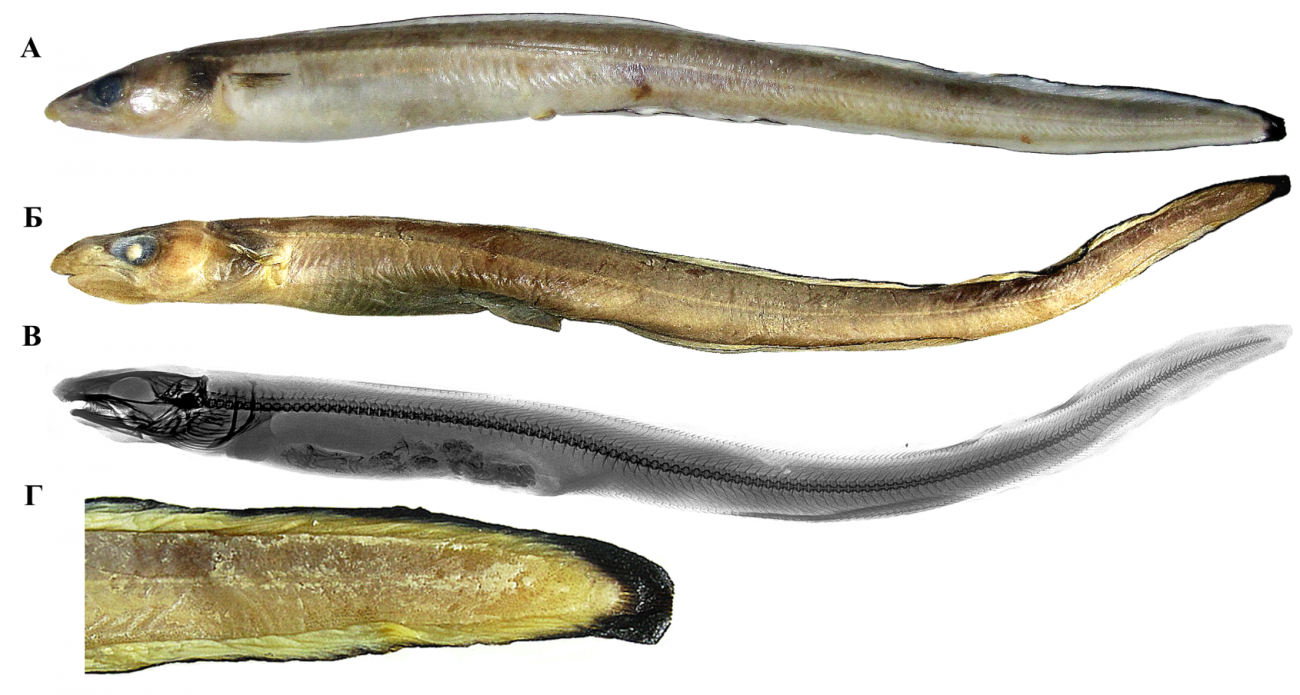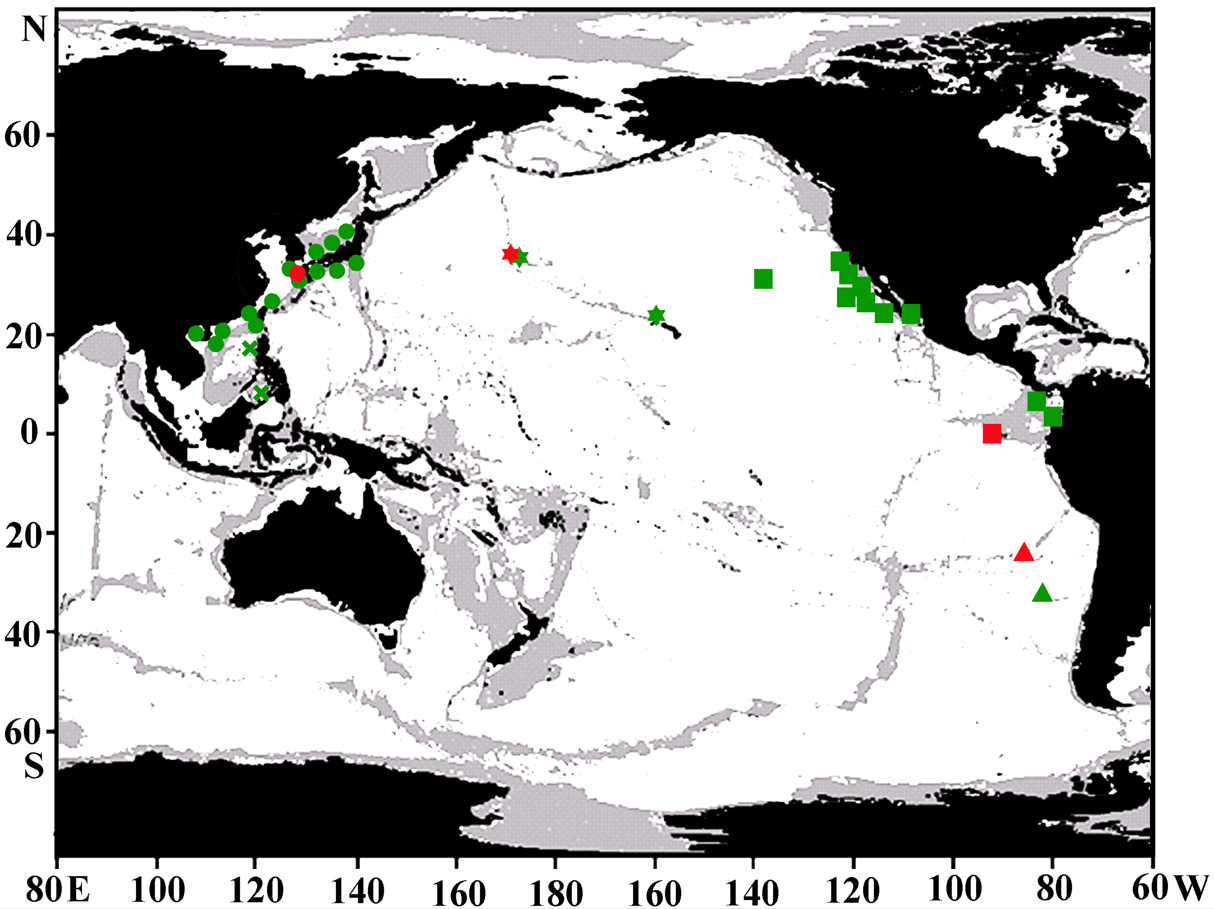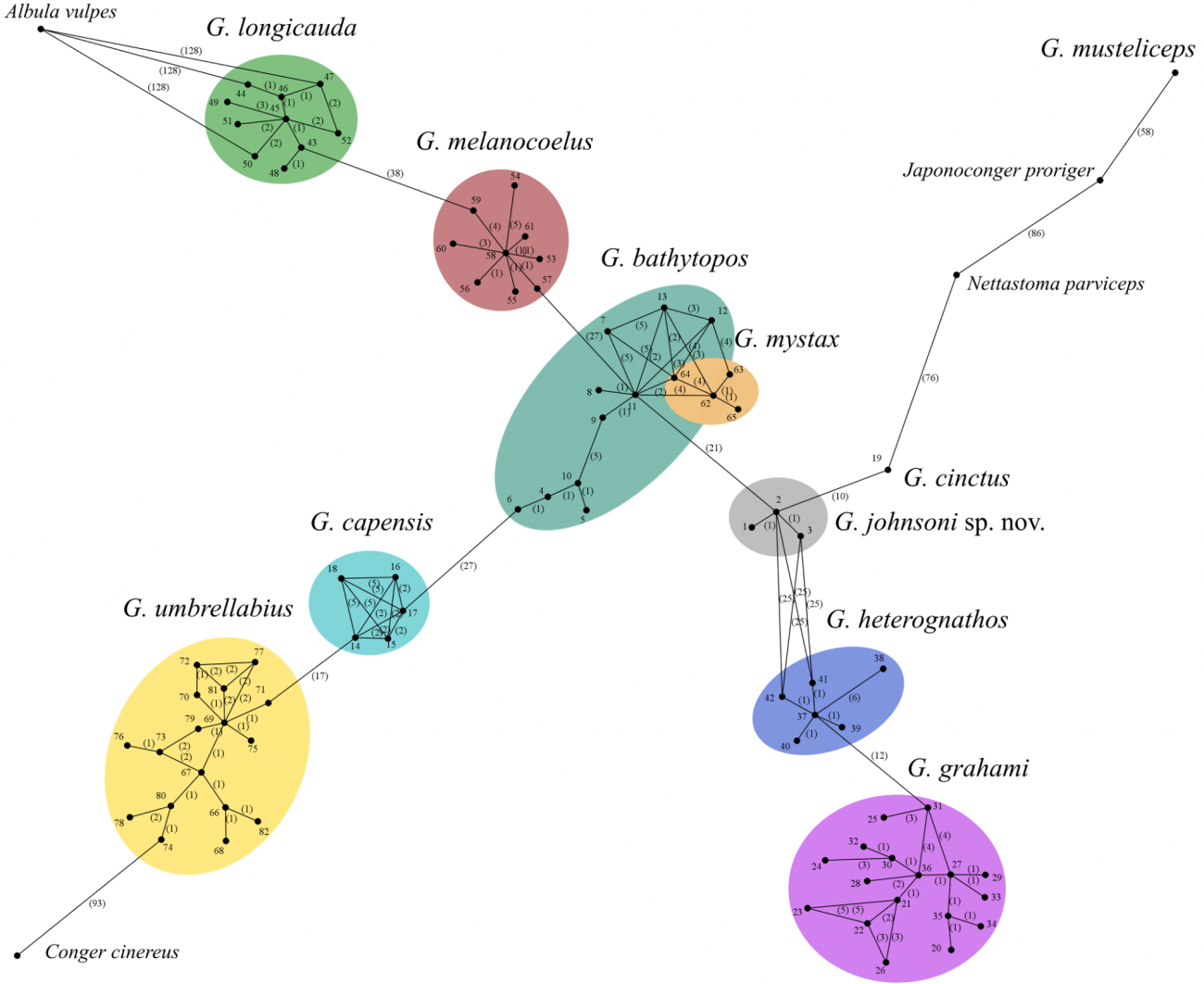
Scientists from the A.N. Severtsov Institute of Ecology and Evolution of the Russian Academy of Sciences (IEE RAS), the P.P. Shirshov Institute of Oceanology of the Russian Academy of Sciences, the N.I. Vavilov Institute of General Genetics of the Russian Academy of Sciences, and the All-Russian Research Institute of Fisheries and Oceanography have described a new species of conger eels from the waters of the underwater Emperor and Hawaiian Ridges.
Currently, the genus of conger eels Gnathophis Kaup, 1860 includes 27 valid species, of which only three species: G. ginanago (Asano, 1958), G. heterognathos (Bleeker, 1858), and G. xenica (Matsubara et Ochiai, 1951) have been recorded in the western and central parts of the North Pacific, although some unidentified species have also been reported previously. During the expedition of the research vessel Professor Kaganovsky in 2019, five specimens of a previously unknown representative of the genus Gnathophis were caught on the Koko seamount, which is part of the Imperial underwater ridge. These specimens served as the basis for the description of a species new for science, Gnathophis johnsoni sp. nov.

Fig. 2. Map of captures of four morphologically similar Gnathophis species in the Pacific Ocean, based on the examined specimens, literature data and the open GBIF database: squares - G. cinctus; stars - G. johnsoni sp. nov.; circles - G. heterognathos (× - doubtful captures); triangles - G. smithi. The locations of holotype finds are marked in red, one symbol may denote several captures.
The new species (Fig. 1) is most similar in its morphological characters to G. bathytopos (Atlantic Ocean), G. cinctus (eastern Pacific Ocean) and G. smithi (Nazca and Salas y Gomez seamounts in the southeastern Pacific Ocean) (Fig. 2). Although most morphological characters of the new species and its closely related species are similar, the results of multivariate statistical analysis clearly separate this species from the others. The results of molecular genetic analysis showed the closest relationship (Fig. 3) between the new species and G. cinctus (genetic divergence 1.81%), which significantly exceeds the differences between haplotypes belonging to the same species (0.36-1.08% divergence, usually no more than 0.9).

Fig. 3. Phylogenetic relationships of Gnathophis johnsoni sp. nov., closely related species, and outgroup species based on mtDNA COI gene sequences. Haplotypes are indicated by numbers, the number of nucleotide substitutions is given in brackets.
The close relationship of G. johnsoni sp. nov. and G. cinctus represents a rare case of biogeographical connection between the faunas of bottom fishes of the western and eastern parts of the Pacific Ocean. Molecular genetic data indicate that some morphologically similar species may represent independently evolved lineages, although the Gnathophis group, which has raised lateral line pores, is probably monophyletic.
Published data of the article: Prokofiev A.M., Frable B.W., Emelianova O.R., Saveleva S.Yu., Orlov, A.M. 2025. A new species of the eel genus Gnathophis (Congridae, Anguilliformes) from the seamounts of the Emperor–Hawaiian Chain, western and central North Pacific // Journal of Marine Science and Engineering. Vol. 13, Article 772.
